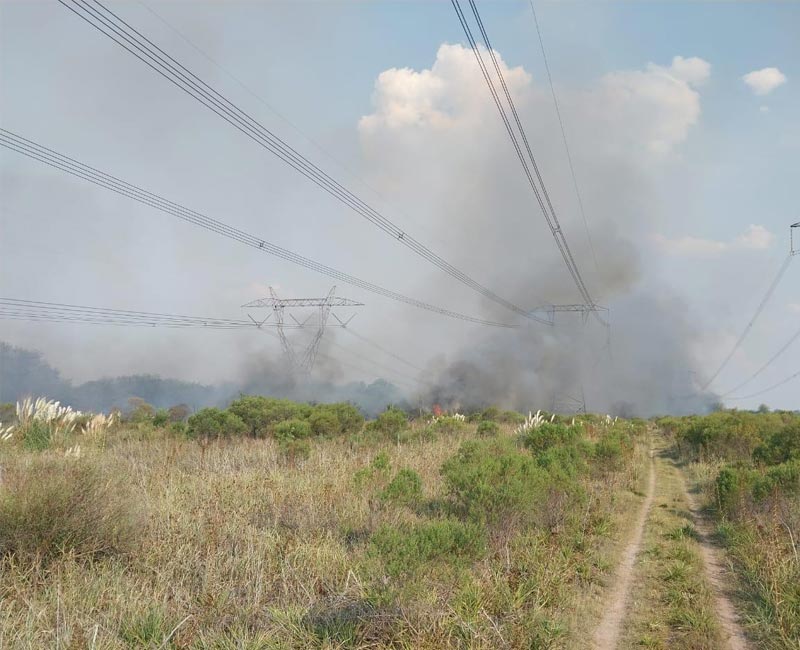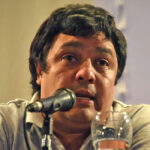
La Secretaría de Energía brindó precisiones sobre los motivos por los que se produjo el gigantesco apagón.
El gigantesco apagón que dejó sin energía a media Argentina fue provocado por un incendio ocurrido debajo de las líneas de alta tensión, a 8 kilómetros de Generar Rodríguez, en la provincia de Buenos Aires.
Así lo precisó el subsecretario de Energía, Santiago Yanotti, quien indicó que una vez desatado el incendio, por protección de los sistemas se deja de transmitir energía.
“Las redes se apagan y pasan dos cosas: de una punta está la demanda (familias, industrias, empresas) que se quedan sin electricidad y por el otro están los generadores que inyectan la electricidad en esos cables, que también se quedan sin la posibilidad de inyectar energía”, señaló.
Dijo que esto “genera dos consecuencias, la más grave para nosotros, es que quedan muchos usuarios sin electricidad. Para que la gente entienda un día como hoy, que es bastante exigente por la temperatura y el horario, había 25.000 Kw de demanda y de repente se perdieron 9.000 Kw”.
Por otro lado, señaló que “la central Atucha inyecta la electricidad y se para por una cuestión de seguridad. Es segura, controlada, bajo protocolo, pero no está entregando electricidad al sistema y eso se siente. La parada de Atucha funcionó muy bien porque se activaron las protecciones y está todo controlado”.
En cuanto al restitución del servicio, informó que ya se está reestableciendo, pero indicó que el proceso no se efectúa de manera simultánea en todo el país. Entra de a poco. Si no hay ninguna falla, se energiza y se normaliza, pero si se encuentra alguna falla, se tardará un poco más.
Respecto de las causas del incendio, el funcionario afirmó que solicitó a Transener (que opera la línea de alta tensión que sufrió el siniestro) que radique la denuncia para que se investigue y se llegue al fondo del asunto.
Por otra parte, confirmó que el incendio está apagado y que se va a investigar si fue intencional. Ya hubo un atentado en líneas de esta envergadura, por eso se investigará a fondo.
“Se está reestableciendo el servicio y hasta ahora no hubo ninguna falla. Puede pasar que aparezca alguna falla porque la salida intempestiva del suministro puede haber dañado algo que uno se entera cuando vuelve a andar”, explicó.
CAMMESA, Transener y las generadoras van trabajando en tiempo real.
El funcionario dijo que “el objetivo ahora es reestablecer el servicio, luego investigaremos las causas del incendio, así como también revisaremos cómo se operó en la emergencia”.
“No se descarta ninguna hipótesis. Le pedimos a la empresa que realice las denuncias de rigor lo antes posible, guarden la escena, se tomen todas las muestras y peritajes para saber lo que pasó”, indicó.
Reveló que “el gran déficit del sistema eléctrico en la Nación son las redes de transporte, pero después de 6 ó 7 años, volvimos a expandir la línea de transporte, a través de una licitación pública, entre Bariloche y Villa La Angostura, otra obra en Salta, Catamarca, Entre Ríos, entre otros. Pero hoy falta infraestructura. Hay falta de expansión, sobre todo en la línea de transporte”.
What were the causes of the huge blackout in half the country?
The Energy Secretariat provided details on the reasons for the gigantic blackout.
The gigantic blackout that left half of Argentina without energy was caused by a fire under the high voltage lines, 8 kilometers away from Generar Rodríguez, in the province of Buenos Aires.
This was stated by the Undersecretary of Energy, Santiago Yanotti, who indicated that once the fire broke out, the systems stopped transmitting energy for protection reasons.
“The networks are turned off and two things happen: on the one hand there is the demand (families, industries, companies) that are left without electricity and on the other hand there are the generators that inject electricity into those cables, which are also left without the possibility of injecting energy”, he pointed out.
He said that this “generates two consequences, the most serious for us, is that many users are left without electricity. For people to understand that on a day like today, which is quite demanding due to the temperature and the time of day, there was 25,000 Kw of demand and suddenly 9,000 Kw were lost”.
On the other hand, he pointed out that “the Atucha power plant injects electricity and stops for safety reasons. It is safe, controlled, under protocol, but it is not delivering electricity to the system and this is felt. The Atucha shutdown worked very well because the protections were activated and everything is under control”.
As regards the restoration of the service, he informed that it is already being reestablished, but he indicated that the process is not being carried out simultaneously throughout the country. It is coming in little by little. If there is no fault, it is energized and normalized, but if any fault is found, it will take a little longer.
Regarding the causes of the fire, the official stated that he asked Transener (which operates the high voltage line that suffered the incident) to file a complaint for an investigation and to get to the bottom of the matter.
On the other hand, he confirmed that the fire has been extinguished and that it will be investigated if it was intentional. There has already been an attack on lines of this magnitude, so it will be thoroughly investigated.
“The service is being reestablished and so far there was no failure. It may happen that a fault appears because the untimely disconnection of the supply may have damaged something that you find out about when it comes back on,” he explained.
CAMMESA, Transener and the generators are working in real time.
The official said that “the objective now is to reestablish the service, then we will investigate the causes of the fire, and we will also review how the emergency was handled”.
“No hypothesis is ruled out. We ask the company to make the necessary reports as soon as possible, to save the scene, to take all the samples and expert reports to know what happened,” he said.
He revealed that “the great deficit of the electric system in the Nation is the transmission grids, but after 6 or 7 years, we expanded again the transmission line, through a public bidding, between Bariloche and Villa La Angostura, another work in Salta, Catamarca, Entre Ríos, among others. But today there is a lack of infrastructure. There is a lack of expansion, especially in the transport line”.











Noticias relacionadas
El campo protesta por las retenciones pero sigue siendo “antiperonista”
¿Quién era el economista de la CEPAL que fue asesinado en su casa de Palermo?
Las promociones no compensaron el menor poder de compra y las ventas por el Día del Padre cayeron 1,7%